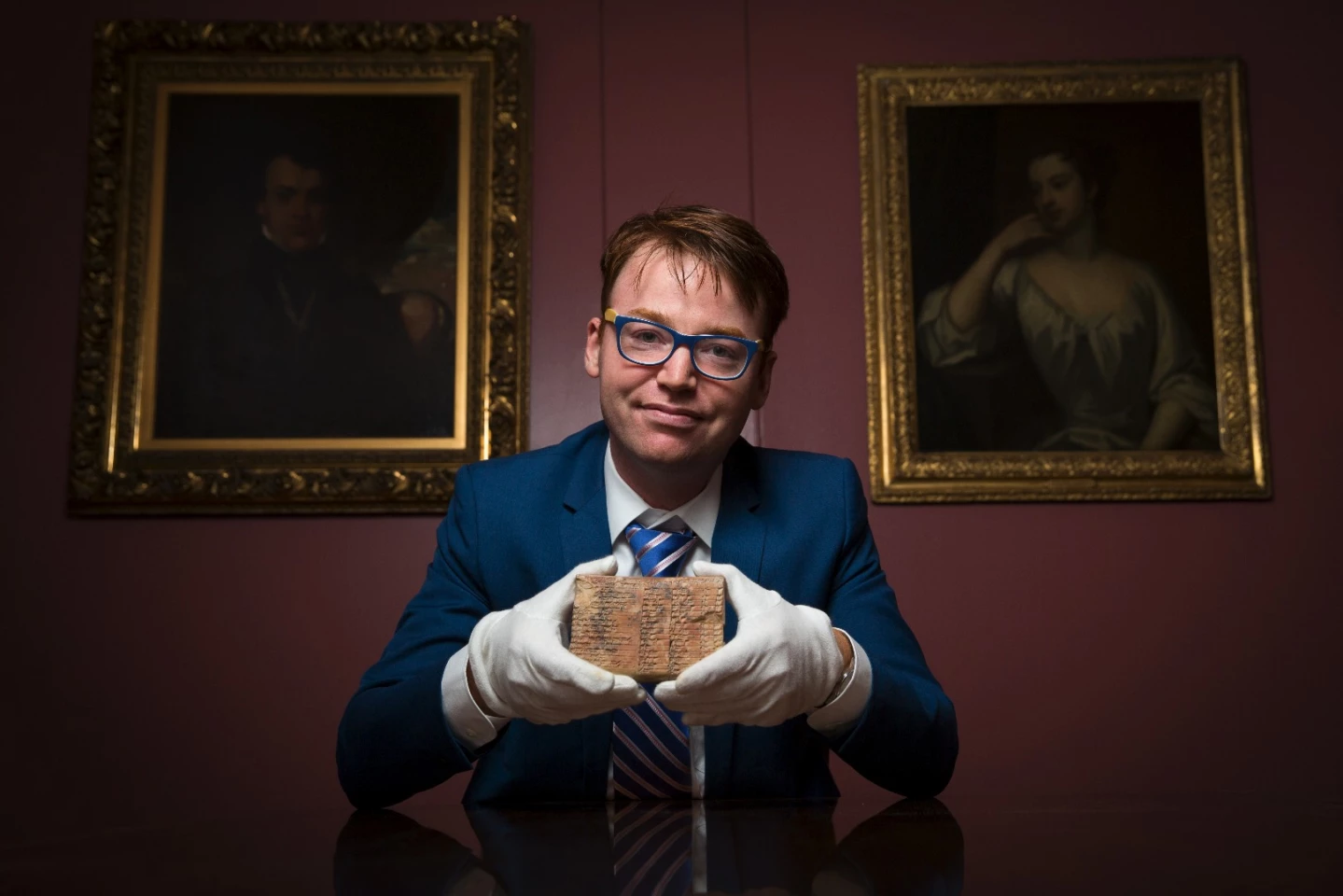It's long been accepted that the ancient Greeks were responsible for developing the mathematical concept of trigonometry, but a new discovery indicates they weren't the first to figure it out after all. Scientists from the University of New South Wales (UNSW) have shed light on the purpose of a mysterious clay tablet containing a trigonometric table created by the Babylonians a full 1,000 years earlier than Pythagoras – and it's more accurate than our techniques today.
The tablet – a small clay slab known as Plimpton 322 – was discovered in the early 20th century in southern Iraq, and currently resides in the Rare Book and Manuscript Library at Columbia University in New York. It's inscribed with numbers in four columns and 15 rows, using a base 60 system similar to the one we use to measure time. These numbers are arranged in what we now call Pythagorean triples, sets of three numbers that can form the equation a2 + b2 = c2.
"Plimpton 322 has puzzled mathematicians for more than 70 years, since it was realised it contains a special pattern of numbers called Pythagorean triples," says Daniel Mansfield, co-author of the study. "The huge mystery, until now, was its purpose – why the ancient scribes carried out the complex task of generating and sorting the numbers on the tablet."
For decades, the commonly-held answer to the riddle was that Plimpton 322 was used by teachers to check their students' answers to geometric problems. But the UNSW researchers noticed similarities between the numbers on the tablet and rational trigonometry, an emerging branch of mathematics.
"Our research reveals that Plimpton 322 describes the shapes of right-angle triangles using a novel kind of trigonometry based on ratios, not angles and circles," says Mansfield. "It is a fascinating mathematical work that demonstrates undoubted genius. The tablet not only contains the world's oldest trigonometric table; it is also the only completely accurate trigonometric table, because of the very different Babylonian approach to arithmetic and geometry."

Long before the advent of electronic calculators, trigonometric tables were the easiest way to solve certain geometric problems. Essentially, users can take a known ratio of the sides of a right-angle triangle and use it to figure out the two unknown ratios. This technique was long attributed to the Greek astronomer Hipparchus, who developed the circular "table of chords" in around 120 BCE. But Plimpton 322 has been dated back to between 1822 and 1762 BCE.
"Plimpton 322 predates Hipparchus by more than 1,000 years," says Norman Wildberger, co-author of the study. "It opens up new possibilities not just for modern mathematics research, but also for mathematics education. With Plimpton 322 we see a simpler, more accurate trigonometry that has clear advantages over our own."
The key to the tablets' accuracy is the base 60 arithmetic, which the researchers say allowed the ancient Babylonians to divide numbers more neatly than our base 10 system can handle. Their studies indicate that the tablets' 15 rows describe a series of 15 right-angle triangles of decreasing inclination. It's broken along the left-hand side, and the team says it most likely used to contain an extra two columns, and a total of 38 rows.
"Plimpton 322 was a powerful tool that could have been used for surveying fields or making architectural calculations to build palaces, temples or step pyramids," says Mansfield.
This finding indicates the ancient Babylonians were mathematically far more advanced than we might give them credit for, and the scientists say that studying other artefacts could reveal similar secrets.
"A treasure-trove of Babylonian tablets exists, but only a fraction of them have been studied yet," says Wildberger. "The mathematical world is only waking up to the fact that this ancient but very sophisticated mathematical culture has much to teach us."
The research was published in the journal Historia Mathematica, and the team describes the find in the video below.
Source: UNSW





